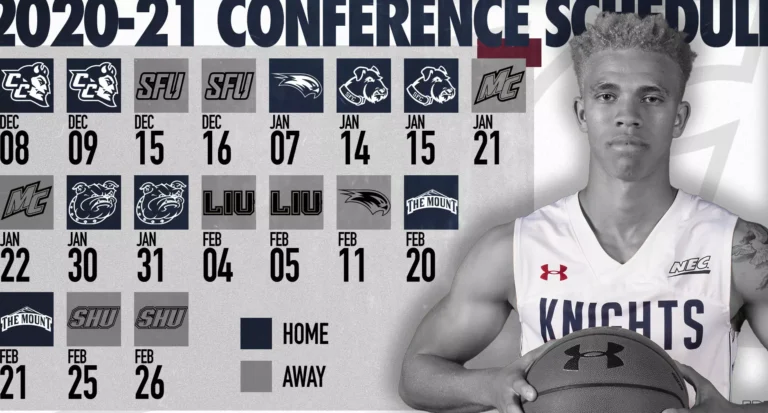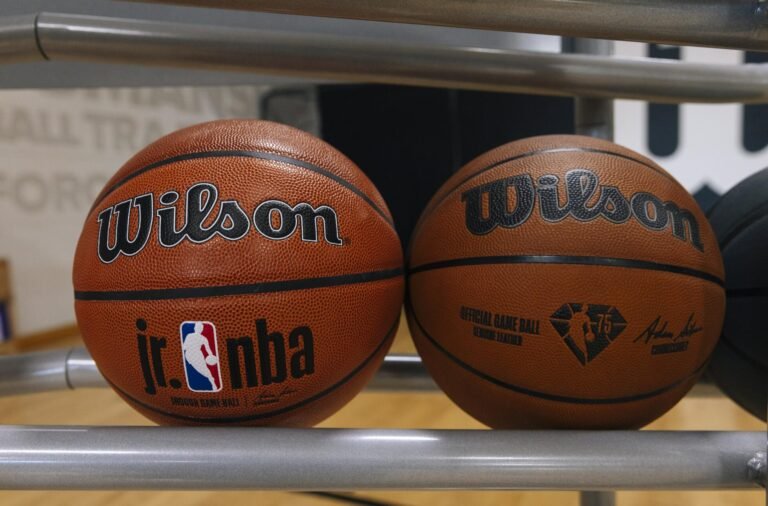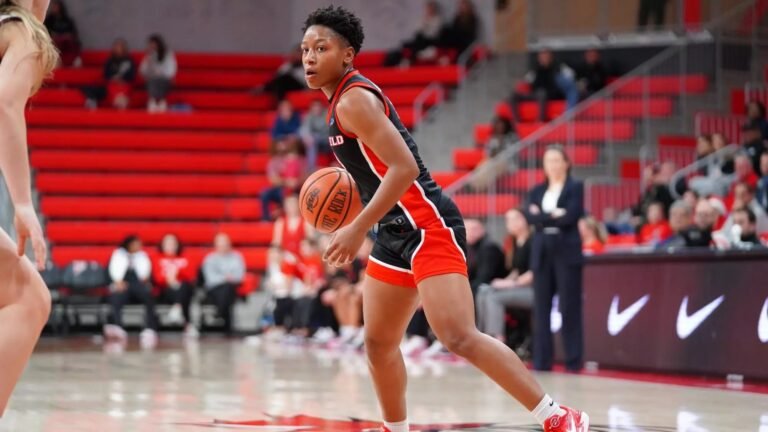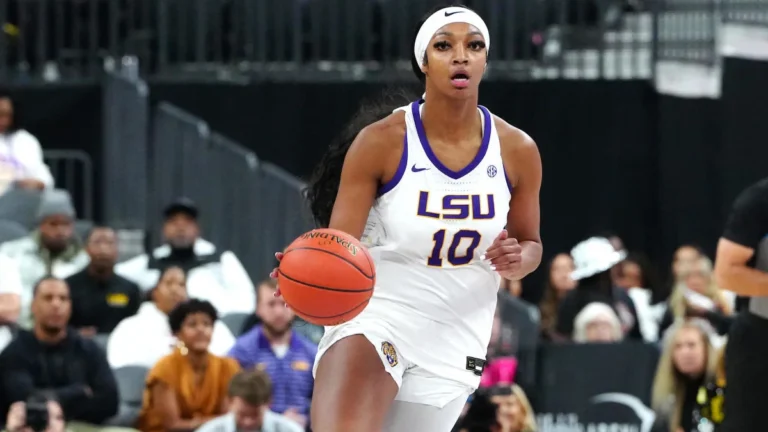How Many Minutes in a Basketball Game Quarter?
Basketball is a dynamic sport played across different levels and leagues worldwide. Each league can have different rules regarding game length, quarter timing, and game structure. For fans and newcomers to the sport, understanding the timing rules of a basketball game is crucial. Whether you’re following an NBA match or catching a local high school game, the timing structure of the game can vary depending on the league.
In this article, we’ll examine the different timing structures of basketball games at various levels, focusing on the number of minutes in a quarter and how game length differs across leagues.
How Many Minutes Are in a Basketball Game Quarter?
Basketball games at the NBA level are structured into 4 quarters that each last 12 minutes. Other levels have different rules about timing. For example, college games are conducted in two 20-minute halves. However, 4 quarters is the most popular structure in games and leagues worldwide.
The NBA: 12-Minute Quarters
In the National Basketball Association (NBA), each game is divided into four quarters, each lasting 12 minutes. This structure is one reason why NBA games are known for their fast-paced and thrilling finishes. The total length of regulation play in an NBA game is 48 minutes, not counting any potential overtime periods.
Why 12 Minutes?
The NBA adopted 12-minute quarters to ensure a balance between entertainment and athleticism. Basketball is an intense, physically demanding game. A 12-minute quarter length allows players to showcase their skills while keeping the game exciting for fans without causing extreme fatigue for the players. This structure provides just the right amount of time for strategic plays and adjustments compared to other professional leagues.
However, it’s important to note that while regulation play is set at 48 minutes, actual NBA games usually take around two to two and a half hours to complete due to stoppages, fouls, timeouts, and commercial breaks.
College Basketball: 20-Minute Halves
While the NBA is known for its four quarters, college basketball in the United States has a different approach to game timing. The National Collegiate Athletic Association (NCAA) uses two 20-minute halves instead of quarters. This means a college basketball game has 40 minutes of regulation time, 8 minutes less than an NBA game.
Why Halves Instead of Quarters?
This difference in timing is due to tradition and the way the game was originally structured at the college level. Many fans enjoy the continuous flow that comes with the two 20-minute halves, as they create a more streamlined game with fewer breaks in play. College basketball’s focus on team strategy, rather than individual star power (as is often seen in the NBA), makes the 20-minute halves format more appealing for that level of play.
Like NBA games, college basketball games tend to last longer than their regulation time due to stoppages, reviews, and timeouts. College games often run between two and two and a half hours as well.
FIBA and International Play: 10-Minute Quarters
The quarter length is slightly different for international basketball competitions governed by the International Basketball Federation (FIBA). FIBA games are divided into four quarters, each lasting 10 minutes. This structure is common in Olympic basketball and various international leagues outside the United States.
Why 10-Minute Quarters?
FIBA’s 10-minute quarters are designed to provide a fast-paced and high-intensity game. International basketball emphasizes team play, ball movement, and defense, and the shorter quarters help keep the action moving briskly. While the overall game time is shorter than an NBA game (40 minutes compared to 48), FIBA games often feel just as intense, with fewer extended breaks and more focus on continuous play.
High School Basketball: 8-Minute Quarters
In high school basketball, the quarter length is even shorter, with each quarter lasting just 8 minutes. This results in a total of 32 minutes of regulation play. High school games are typically shorter due to the players’ younger age and developing skills.
Why 8-Minute Quarters?
The shorter quarter length at the high school level allows players to remain fresh throughout the game, helping coaches manage the game without overwhelming young athletes. The shorter game length also helps accommodate the multiple games that often occur in a single evening at a high school event.
Despite the shorter quarters, high school basketball can be as exciting as professional or college games, with plenty of dramatic moments and last-second victories.
Overtime Periods
When a basketball game ends in a tie at the end of regulation time, overtime periods are used to determine a winner. Overtime periods vary in length depending on the level of play:
- NBA: Overtime periods are 5 minutes long.
- College Basketball: Like the NBA, college overtime periods also last 5 minutes.
- FIBA/International Play: FIBA games have 5-minute overtime periods as well.
- High School Basketball: In most high school leagues, overtime periods are also 4 or 5 minutes long, depending on the league’s specific rules.
The sudden-death nature of overtime in basketball often leads to some of the sport’s most exciting moments. Teams must balance aggressive play with careful strategy to secure a win in these shorter periods.
Factors That Can Affect Game Length
While the number of minutes in a quarter is set, several factors can affect the actual length of a basketball game:
- Timeouts: Each team is allowed a set number of timeouts per game, which can extend the game’s duration.
- Fouls: Personal and technical fouls can stop the clock and lead to free throws, adding to the game’s length.
- Reviews: In some leagues, referees can review plays to ensure correct calls are made, especially in the final minutes of a game.
- Commercial Breaks: At the professional level, especially in the NBA, TV timeouts and commercial breaks can significantly extend the duration of a game.
Conclusion
Basketball is a globally popular sport. While quarter lengths may vary from league to league, the core structure of the game remains the same. Whether you’re watching an NBA game with 12-minute quarters, a college game with two 20-minute halves, or a high school game with 8-minute quarters, basketball’s excitement and fast-paced nature are universal.
Understanding how many minutes are in a basketball game quarter can enhance your appreciation for the sport and help you better follow the action on the court.
Read Also: Where Can I Watch USA vs Canada Basketball?
FAQs
Are basketball quarters 15 minutes?
No, NBA quarters are 12 minutes, and other leagues may vary.
How many minutes make a quarter in basketball?
NBA quarters are 12 minutes, while other leagues have different lengths.
How many minutes is a full-time basketball game?
An NBA game has 48 minutes of regulation time.
How many is one quarter in basketball?
One quarter in basketball is 12 minutes in the NBA, but it varies by league.
Is a basketball game 2 hours?
NBA games usually last around 2 to 2.5 hours and include stoppages.
Is basketball 2 or 4 quarters?
Basketball typically has 4 quarters, though college games have 2 halves.







